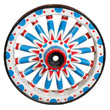In the early 1920s, the Hagenbeck-Wallace started building a heavier drop frame wagon that allowed for a lower load and yet carried more baggage inside. Knowing that the Hagenbeck-Wallace Circus was wintering in West Baden, Indiana, it is then “Assumed” that this wagon was built there. At least one other wagon # 27, was built of the same design at the same time. That wagon is discussed in a separate wagon file. The drop frame begins right behind the turning radius of the front running gear. This wagon and wagon # 27 are both found to have a medallion ornamentation on the drop frame using four decorations on each side. The first time we find any photographic evidence of this wagon is in 1921 when a photograph of the wagon with a painted Fife and Drum scene and there men standing beside it in uniform was discovered.
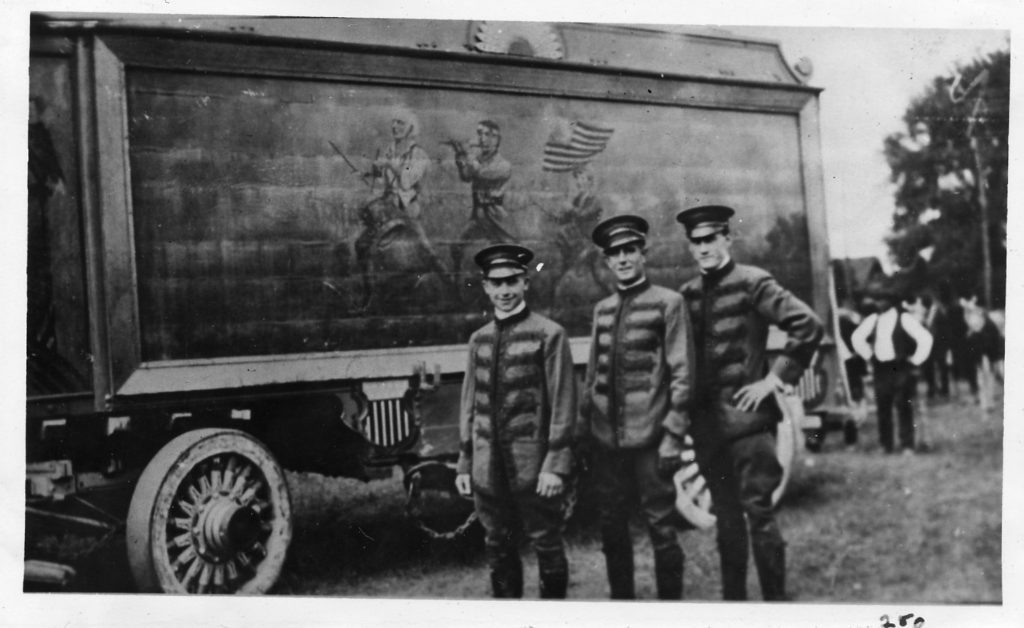 ( 1921 – Parade Marshalls – LaDoux, Orton and Conners, 1921 – Walker Morris photo )
( 1921 – Parade Marshalls – LaDoux, Orton and Conners, 1921 – Walker Morris photo )
The 1922 loading lists called this wagon # 26 – Performers Dressing trunks 19ft. This inventory was taken on June 1, 1922 but there is no notation as to who took the loading list. The 1923 loading list called this # 26 – Tableau – trunks, 19ft. There are no other loading lists or wagon compilations that I know of until 1937 when the Hagenbeck-Wallace Circus was leased to the H & A Circus Operating Co.
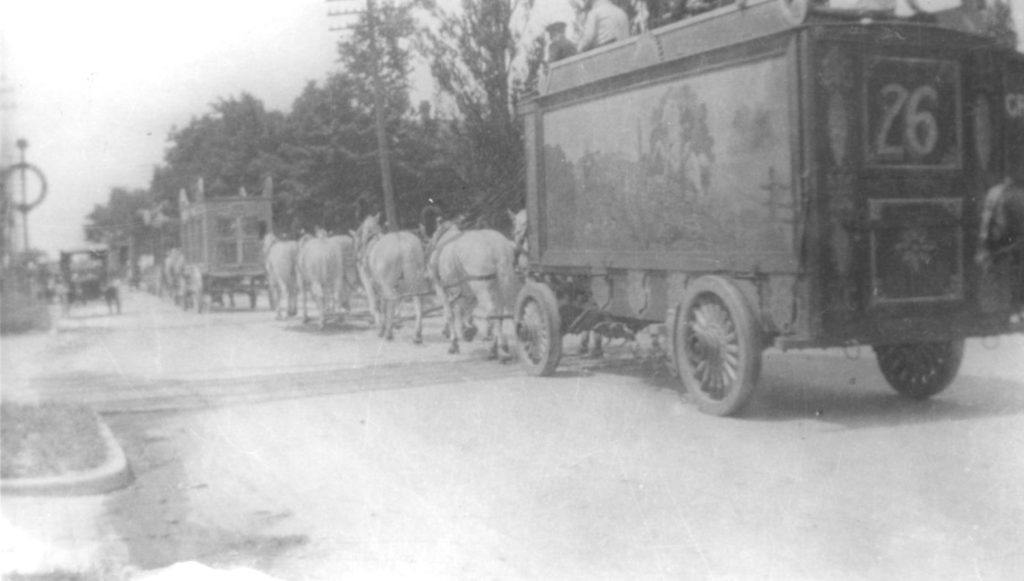 ( 1922 – Conover Set # 800 – photo # 309 )
( 1922 – Conover Set # 800 – photo # 309 )
In addition to the four medallions on the drop frame this wagon had a very distinguished look with a half of a sunburst type carving in the center of the Skyboard. The wagon was also a heavy one and 18 spoke wheels are found to be on this wagon. In 1922, the wagon was carrying a different painting as evidenced by the photo above. It’s difficult to tell what the painting is but it is definitely different than the 1921 painting.
By 1925, the painting had been re-done. It now carried an Artic Tundra scene.
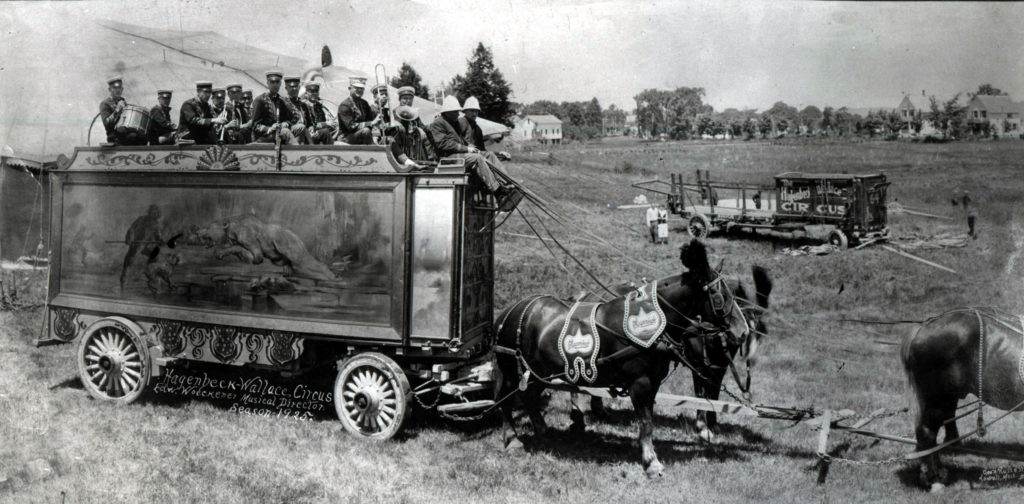 ( 1925 – Big Show Band on Top )
( 1925 – Big Show Band on Top )
By 1924, the painting had been re-done. It now carried an Artic Tundra scene. The painting was the same again in 1925. These paintings were done on a canvas material attached to the side of the wagon. The medallions had also been re-painted and outlined. By 1928, many changes had occurred.
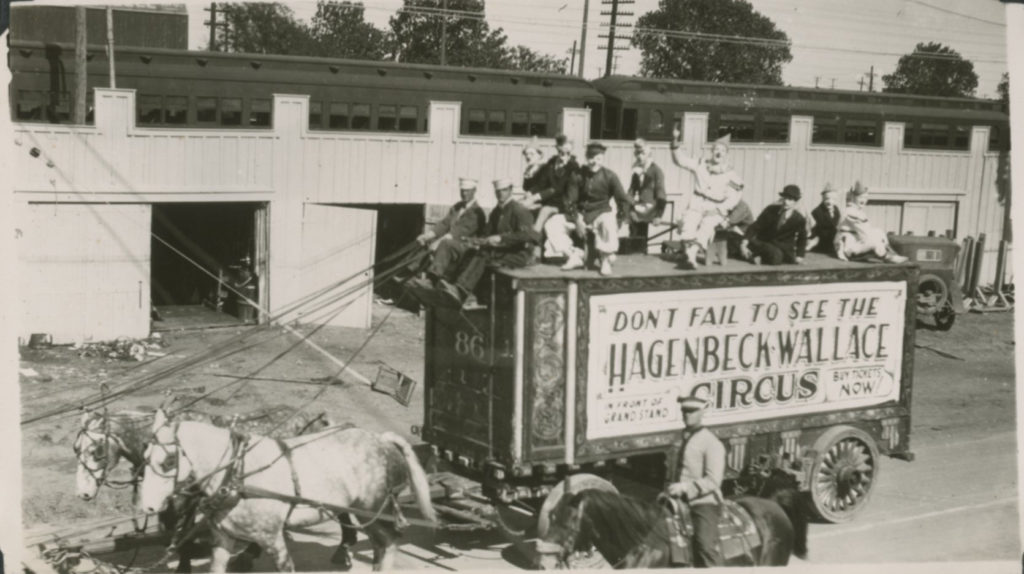 ( 1928-1929 – Hagenbeck-Wallace parade leaves the Fairgrounds – Pete Mardo photo
( 1928-1929 – Hagenbeck-Wallace parade leaves the Fairgrounds – Pete Mardo photo
While the well recognized skyboard had been removed, the 18 wheel spokes and the four medallions remained. The medallions had been re-painted with the flag motif once again. Rather than the decorative paintings that had existed for the last several years, the wagon was now painted as a huge advertisement to come see the circus. At this point, the wagon is completely lost for the next 11 years as far as being on a show or finding a picture.
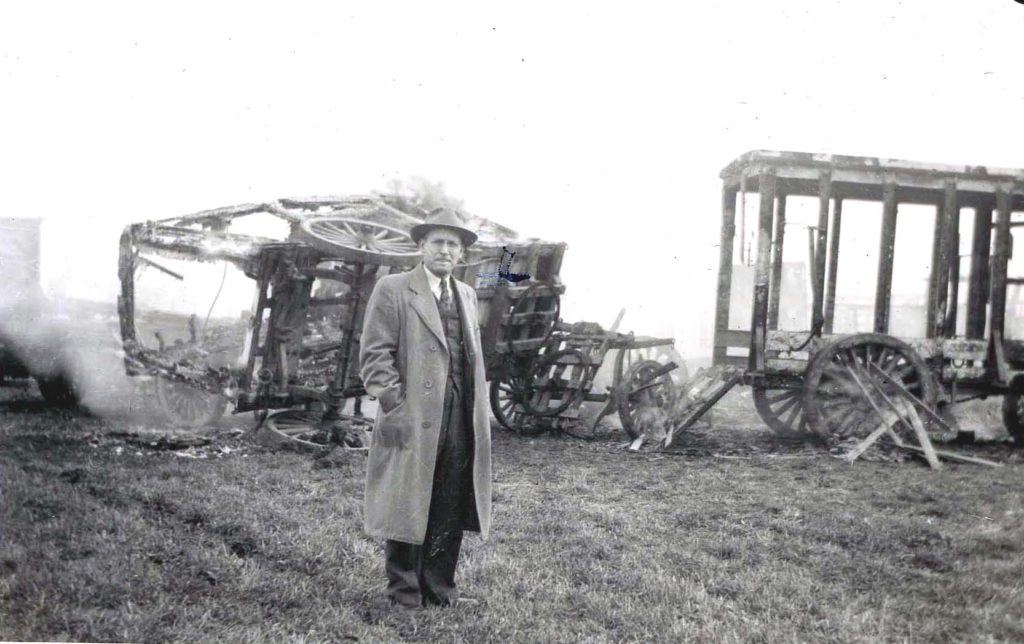 ( 1941 – Chalmer Condon – note the 18 spoke wheels. )
( 1941 – Chalmer Condon – note the 18 spoke wheels. )
The fact that this drop frame wagon with 18 spoke sunburst wheels is found in the Nov. 1941 burn pile proves that this wagon did NOT become on of the other drop frame tableaus. When comparing this wagon to wagon # 27, you’ll see then differences in the burn pile to tell the two wagons apart.
If you have any questions or have more photographic evidence, feel free to contact us at circuswagons@gmail.com
